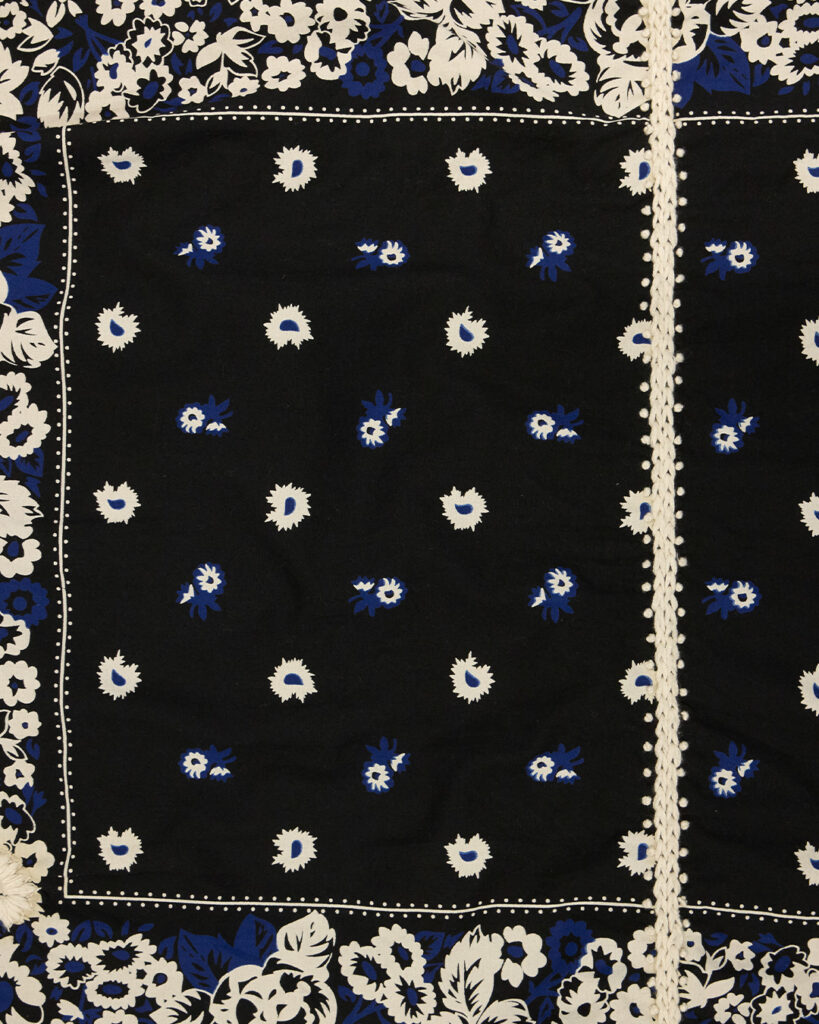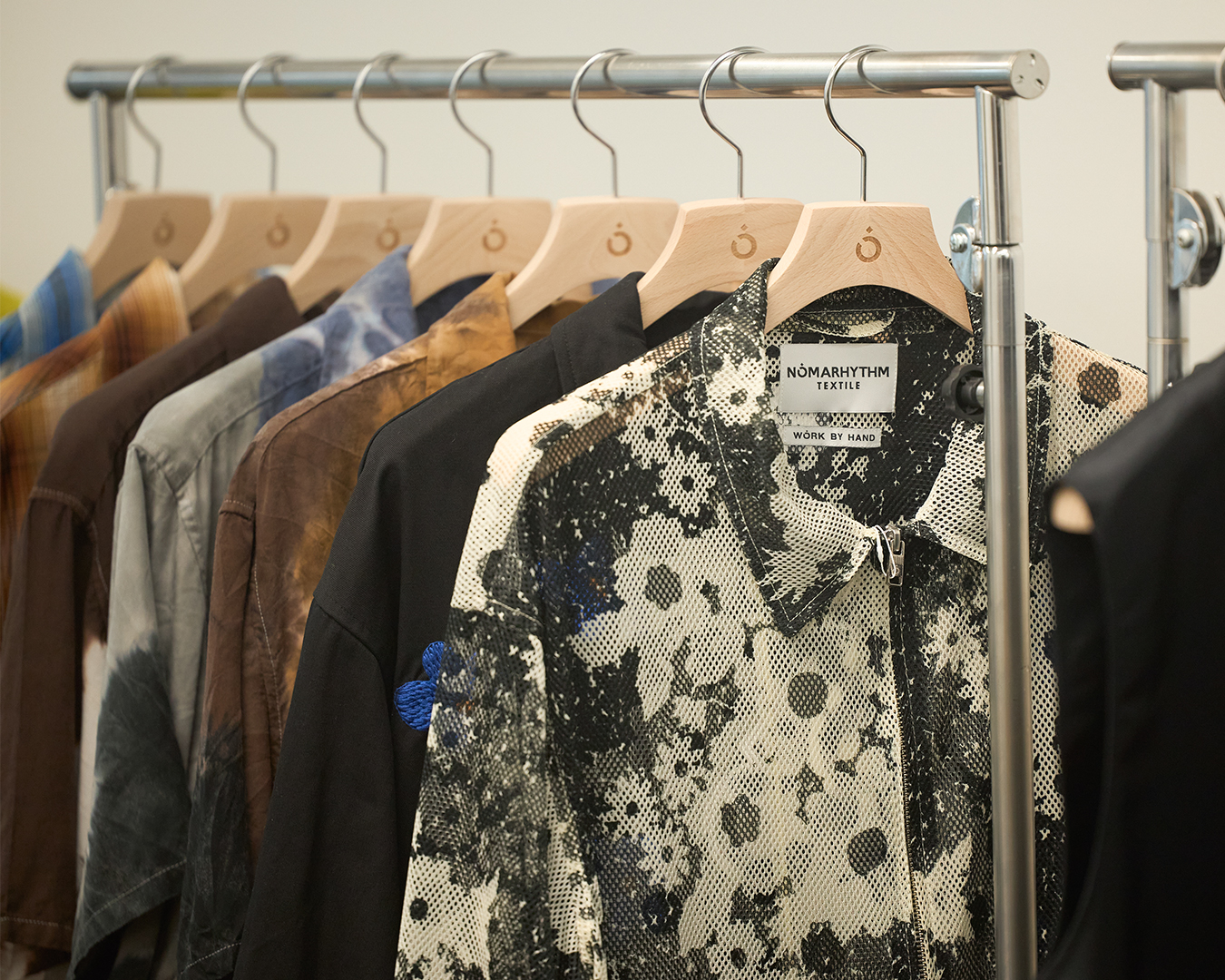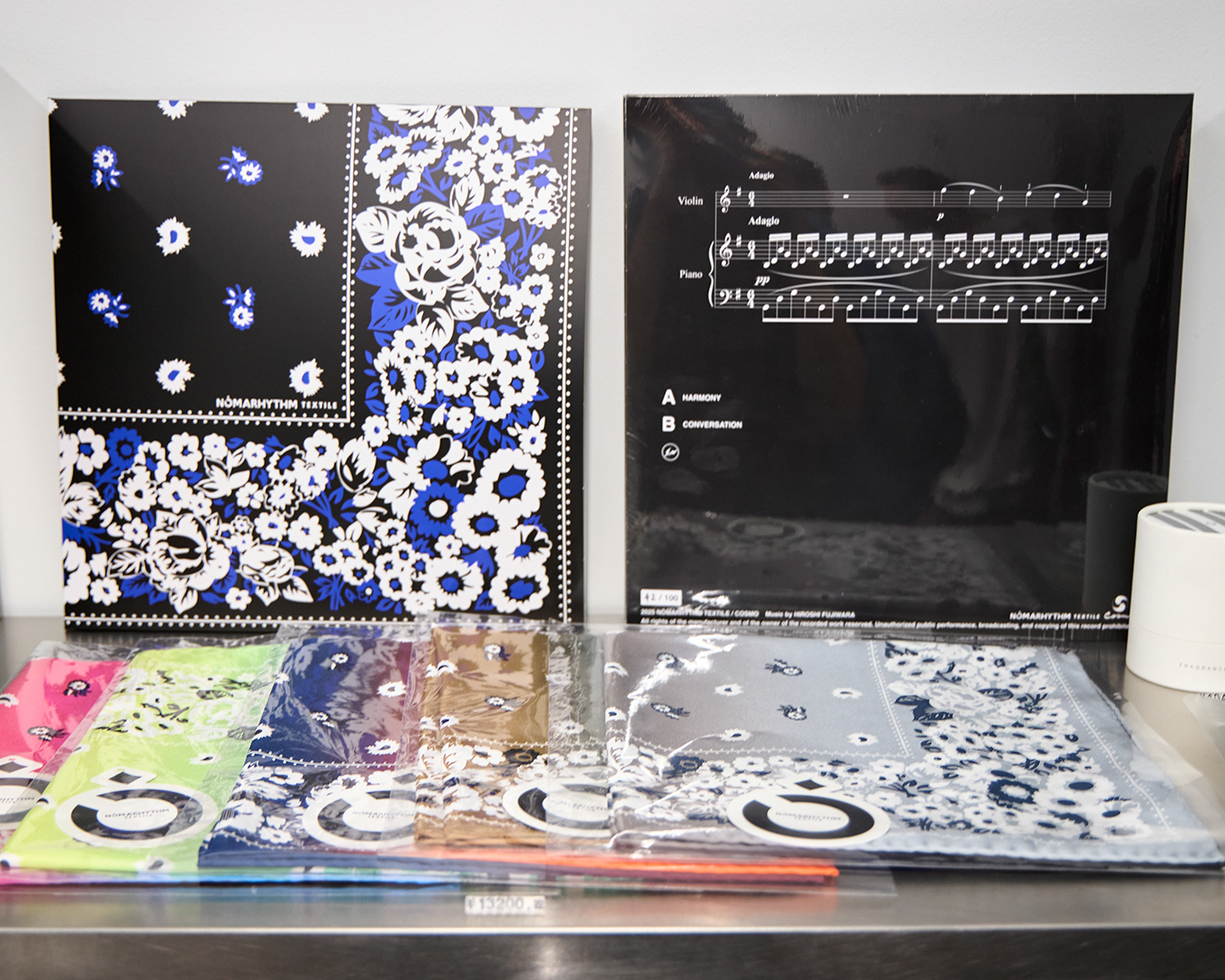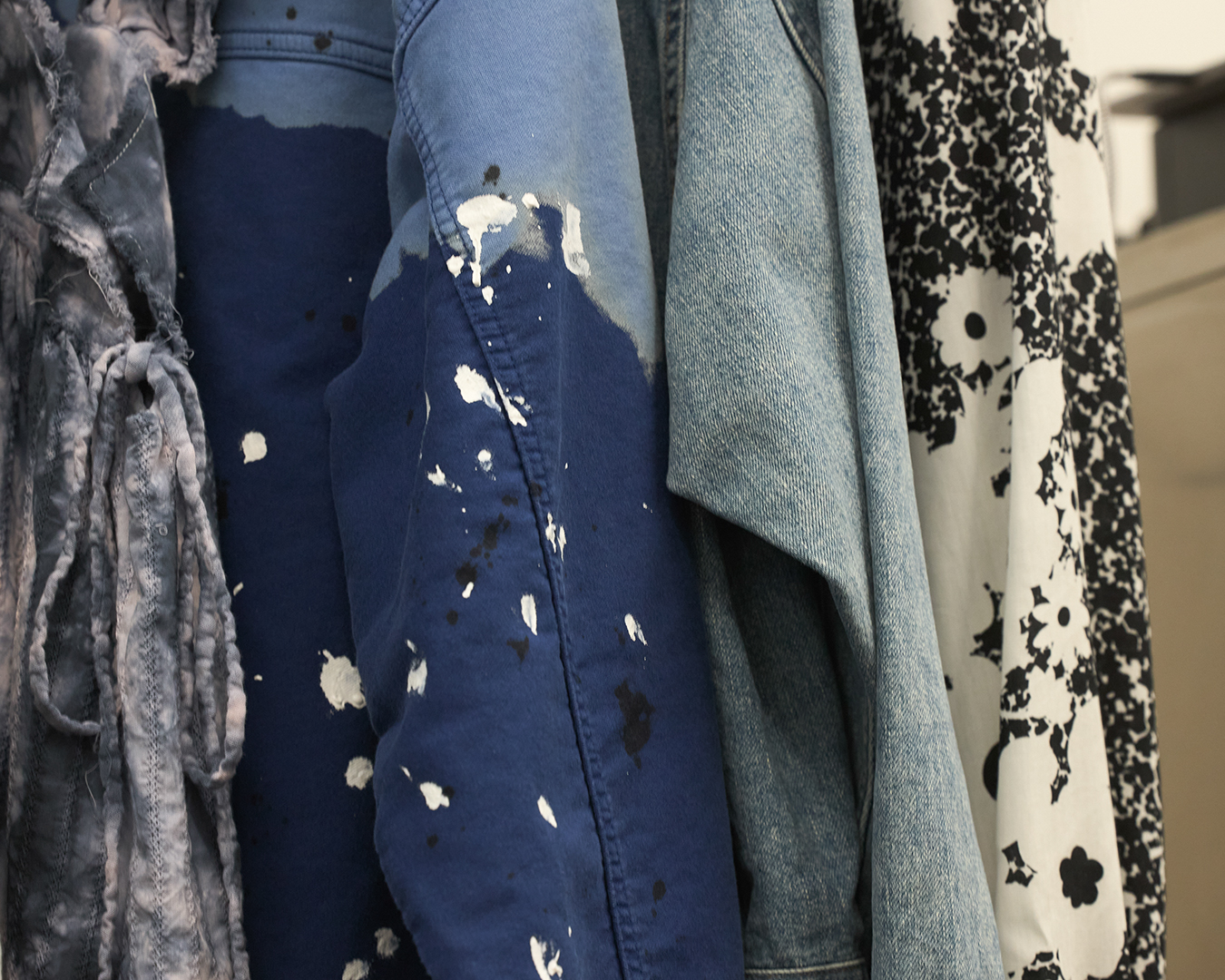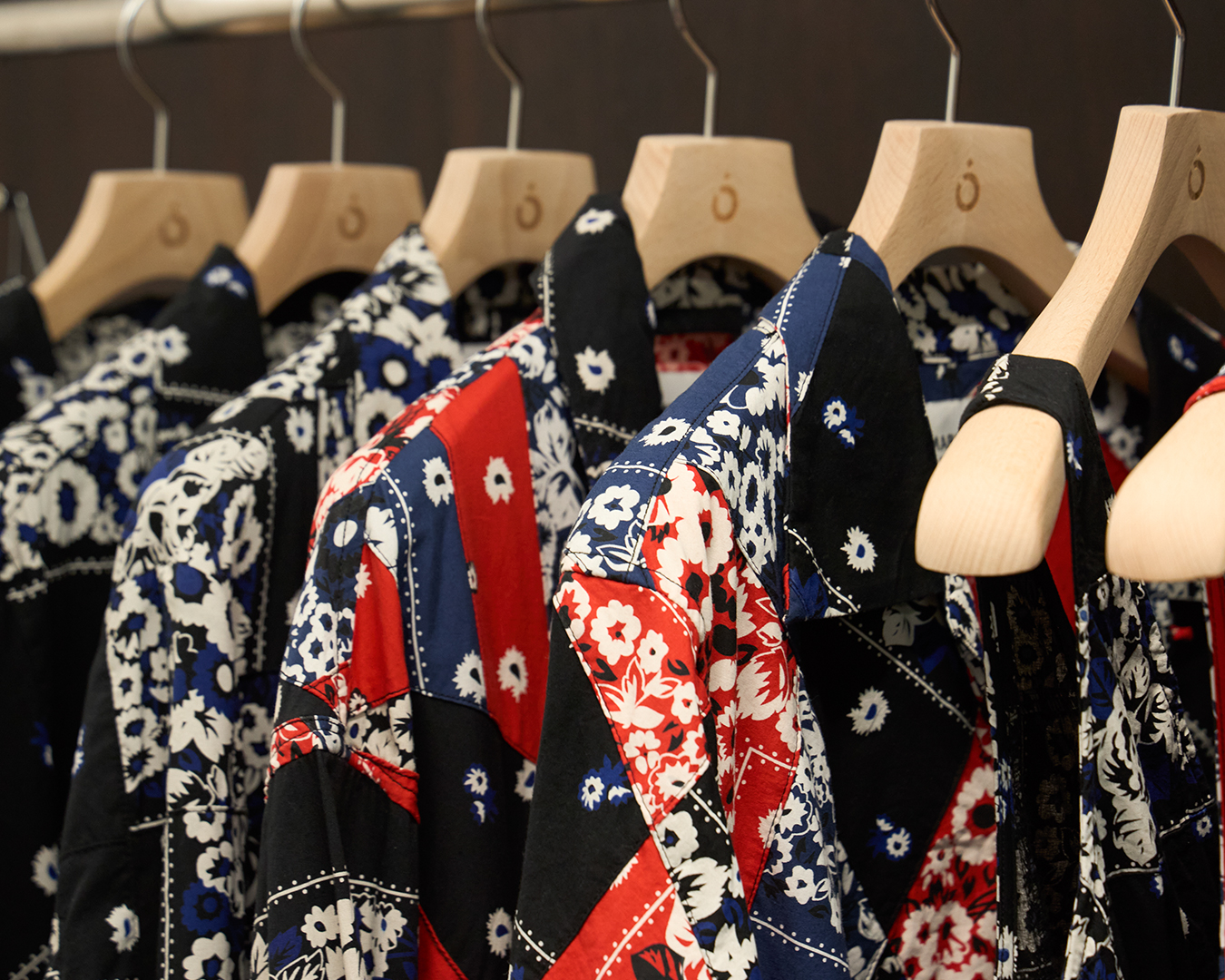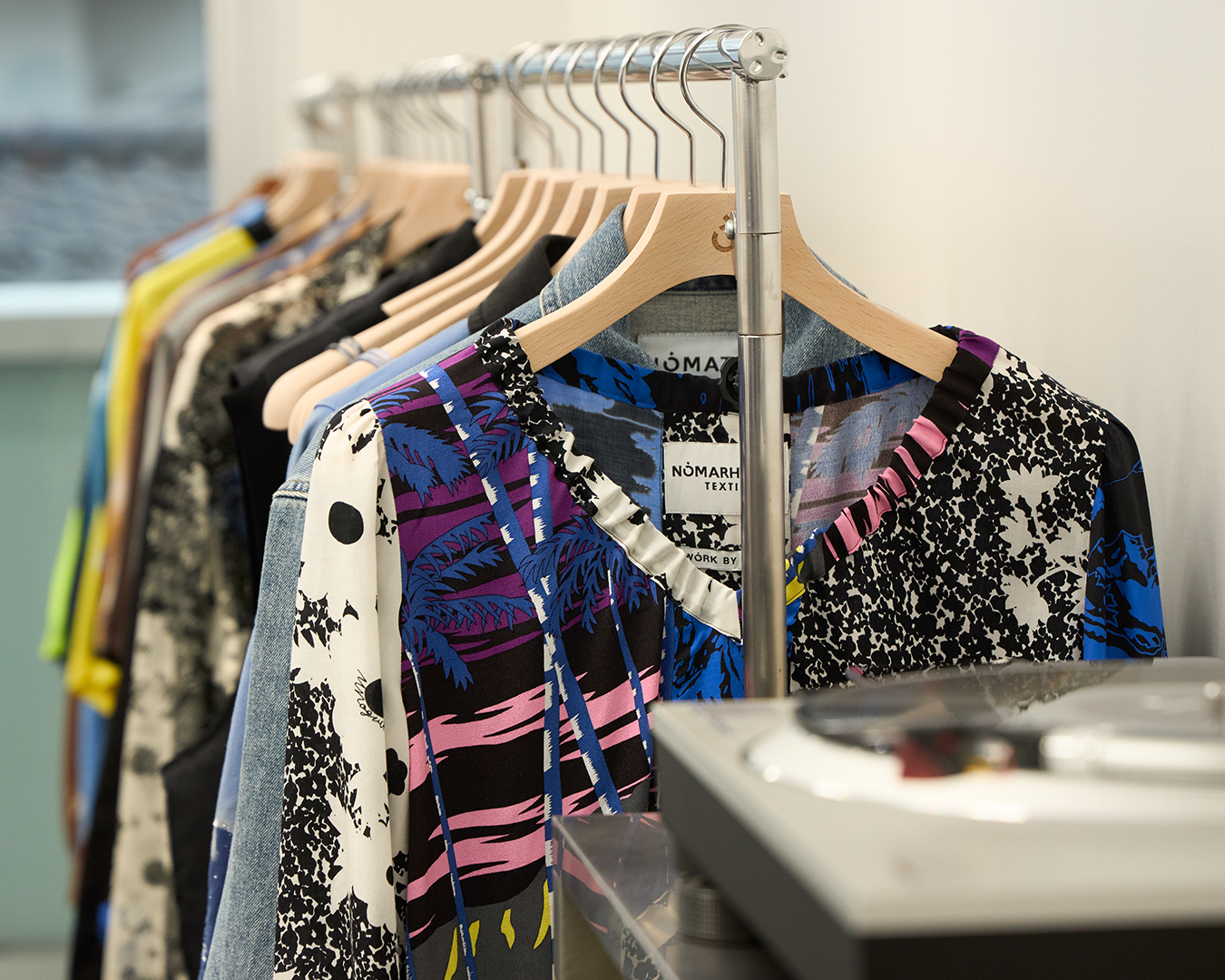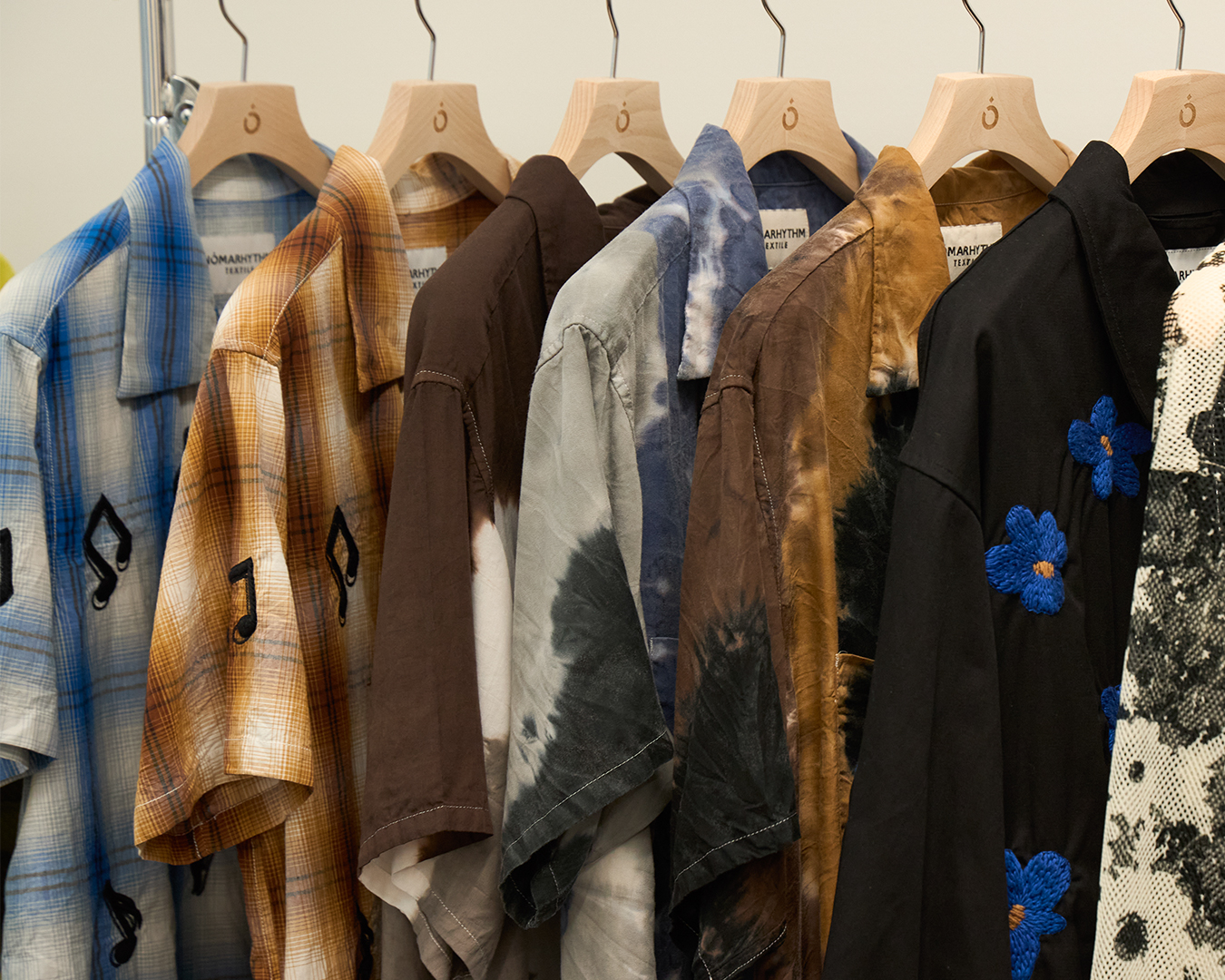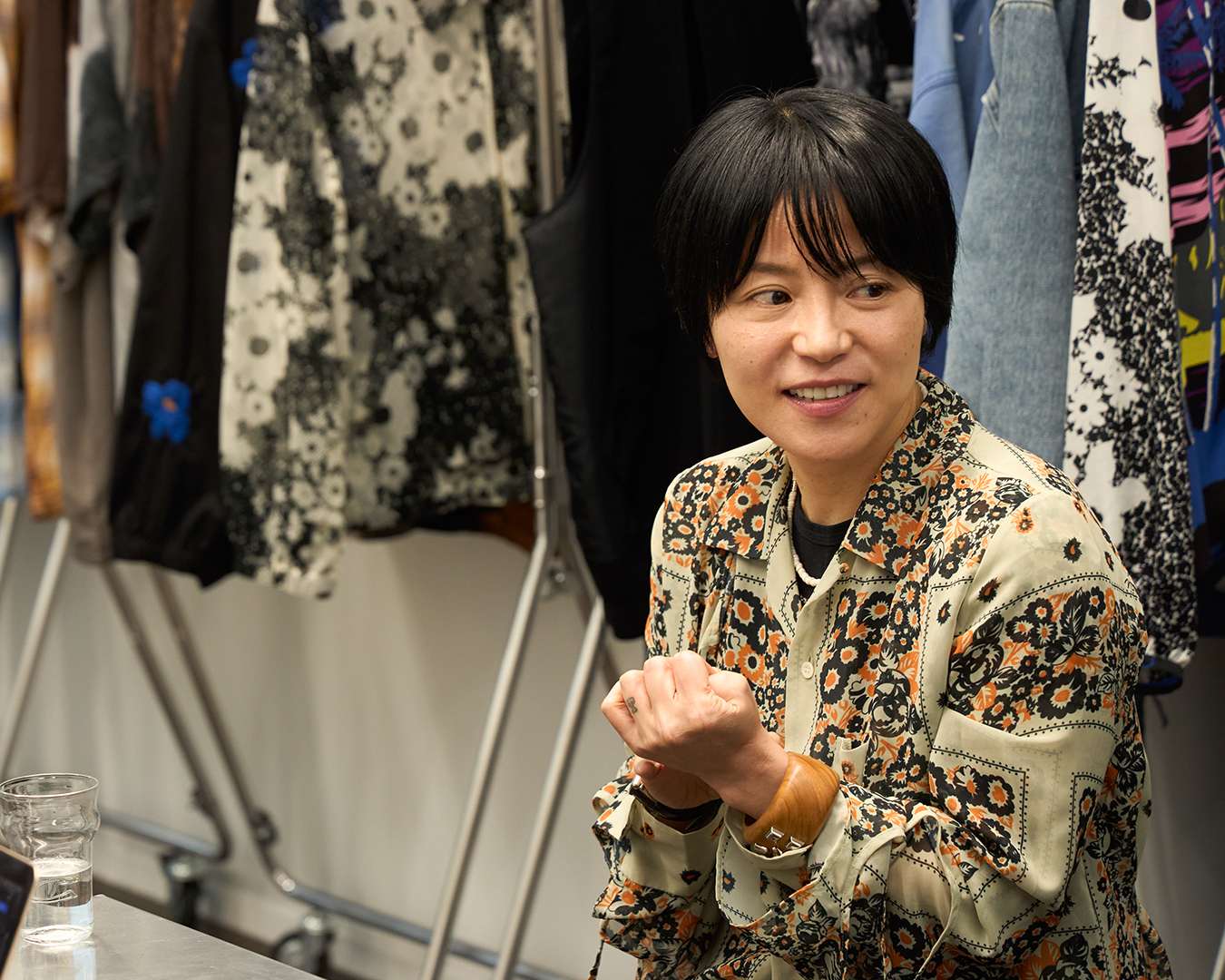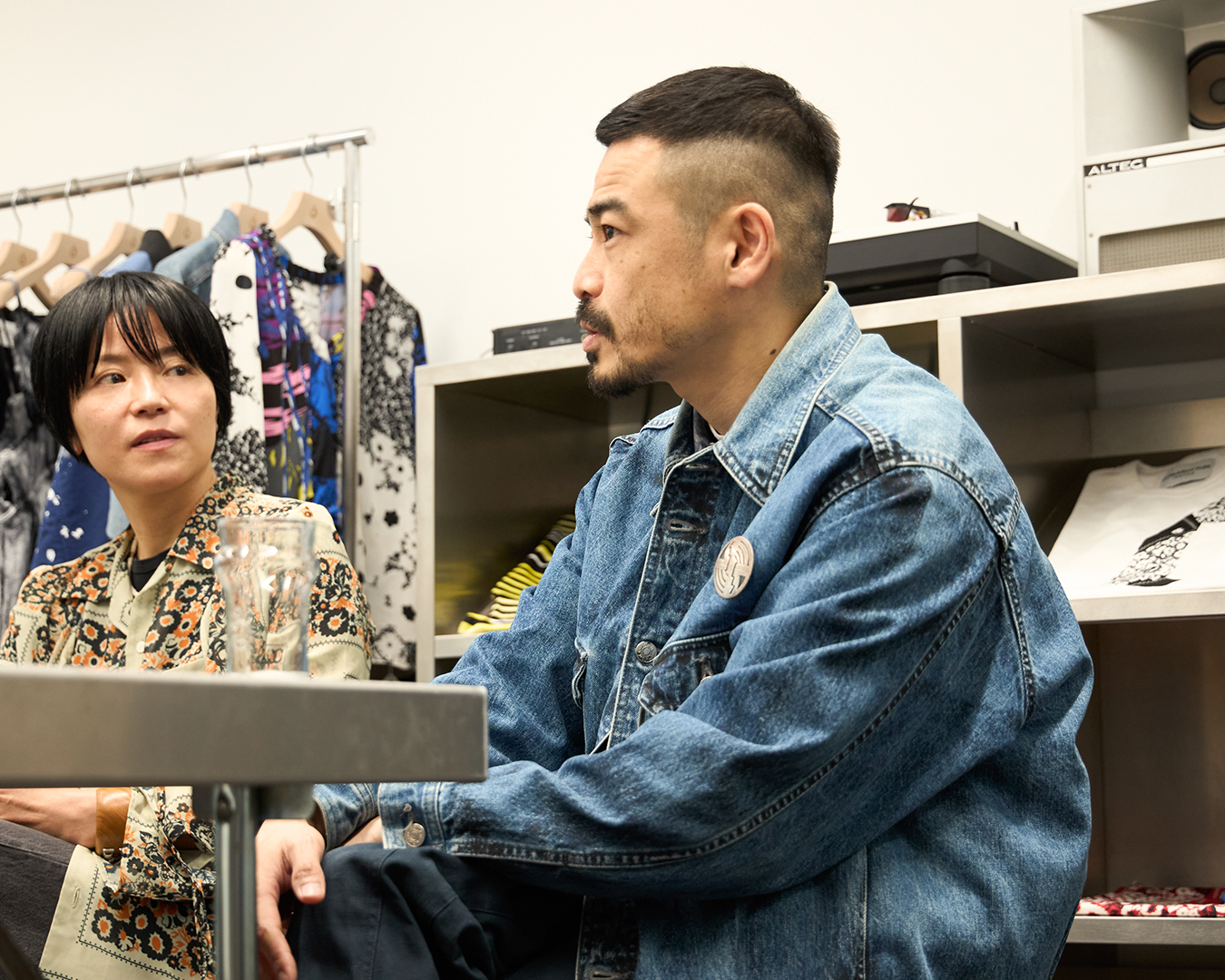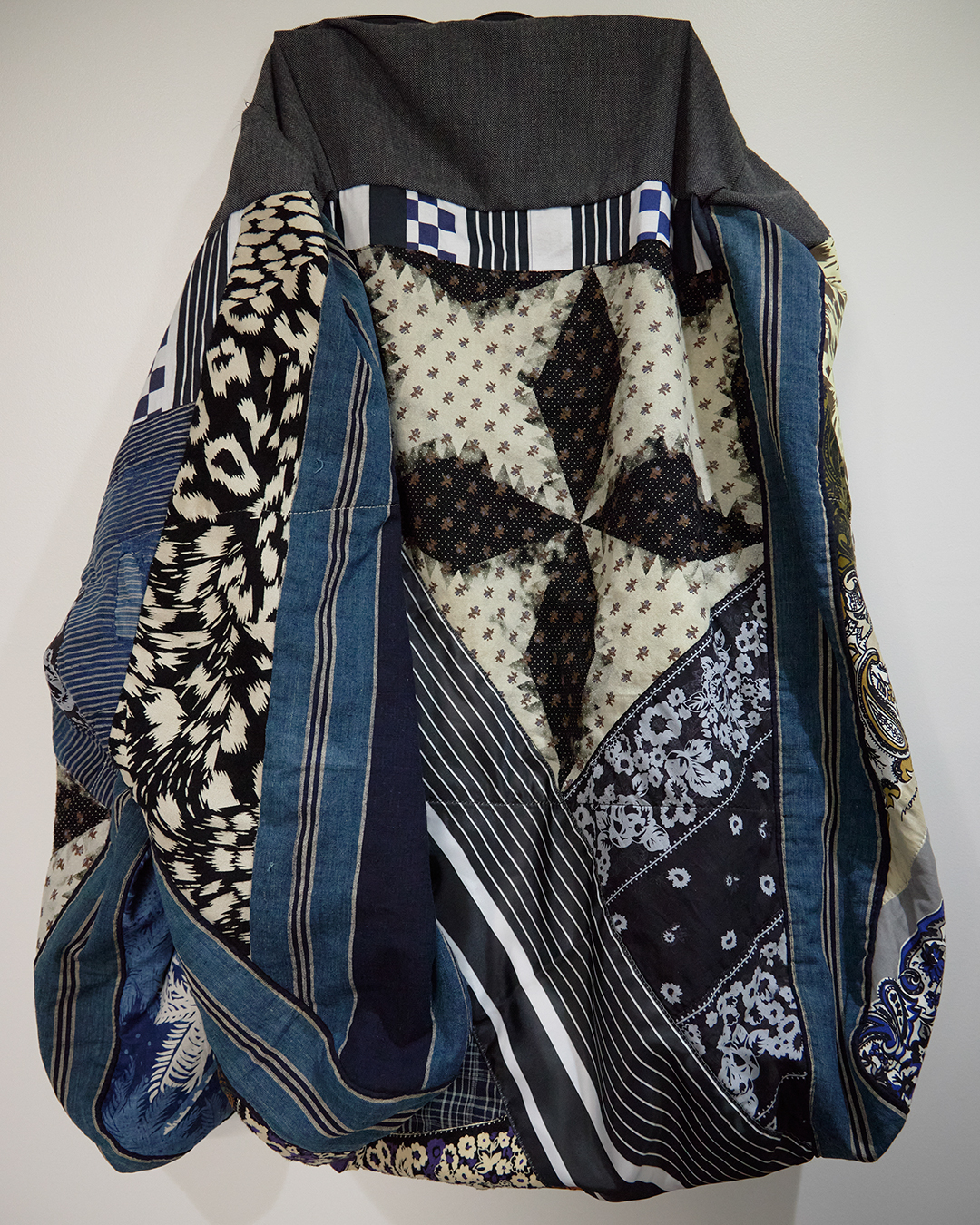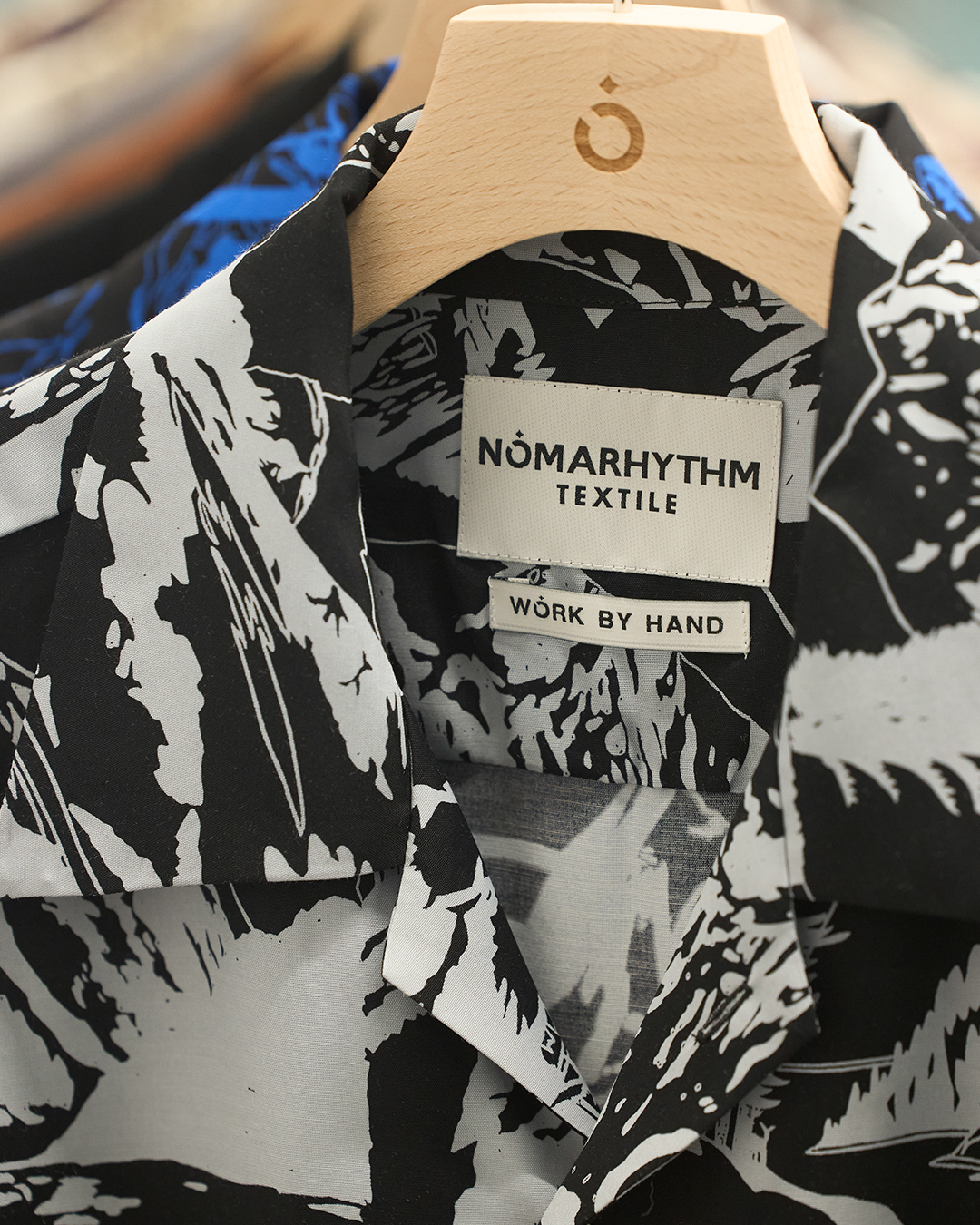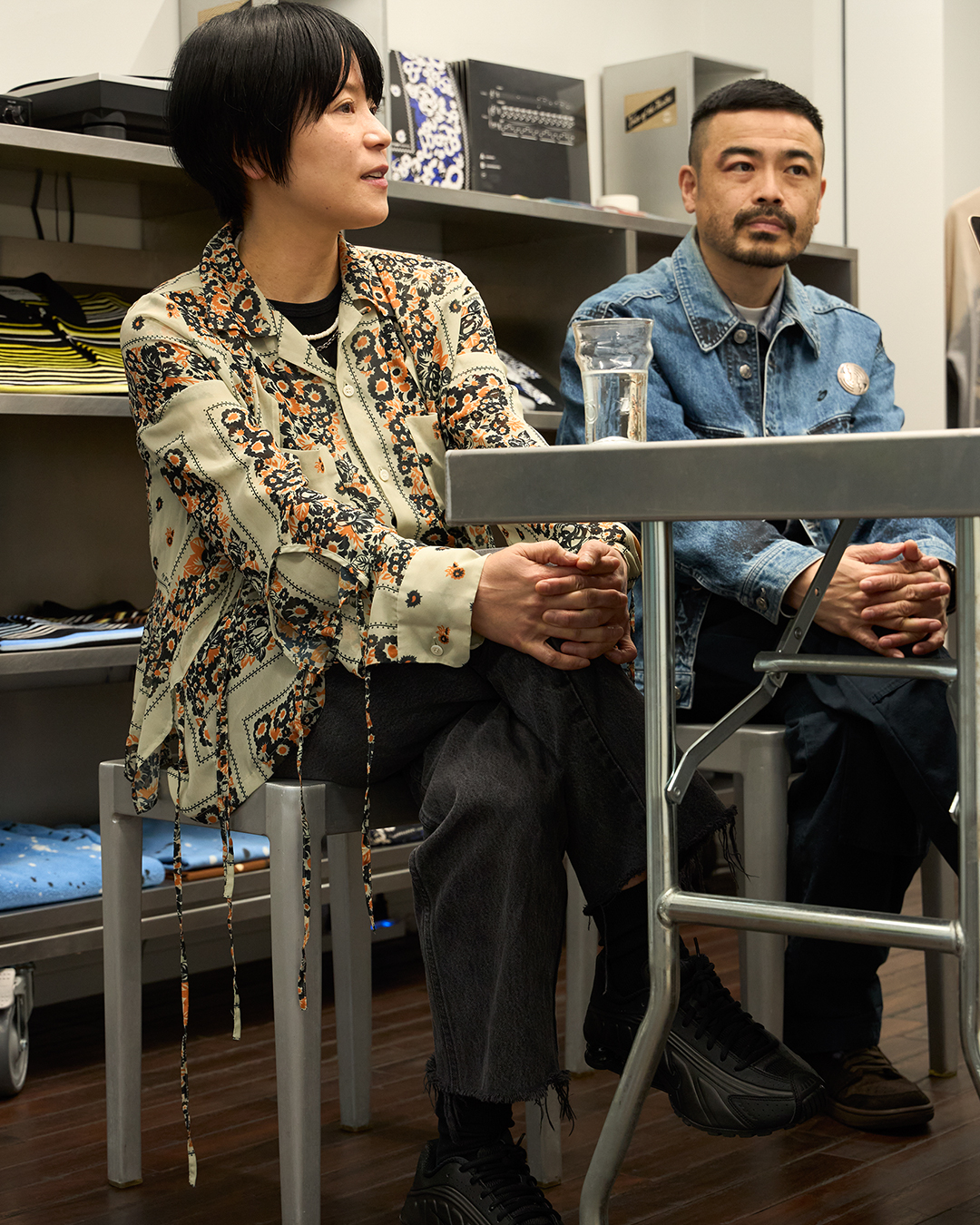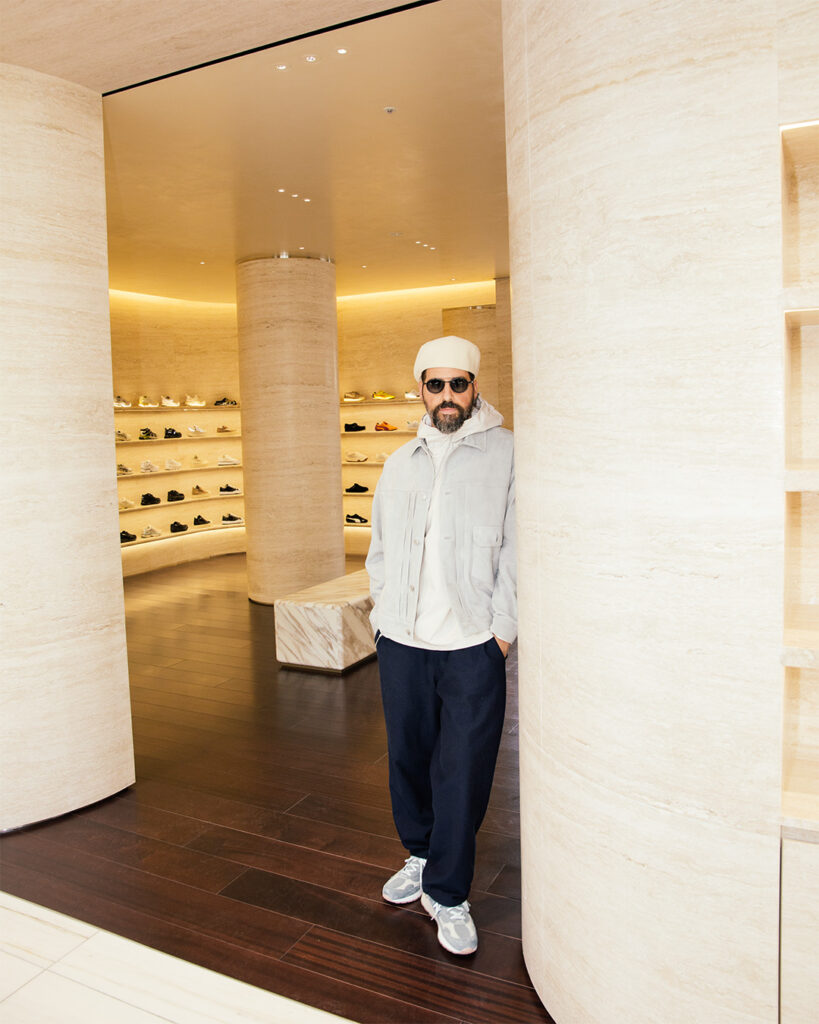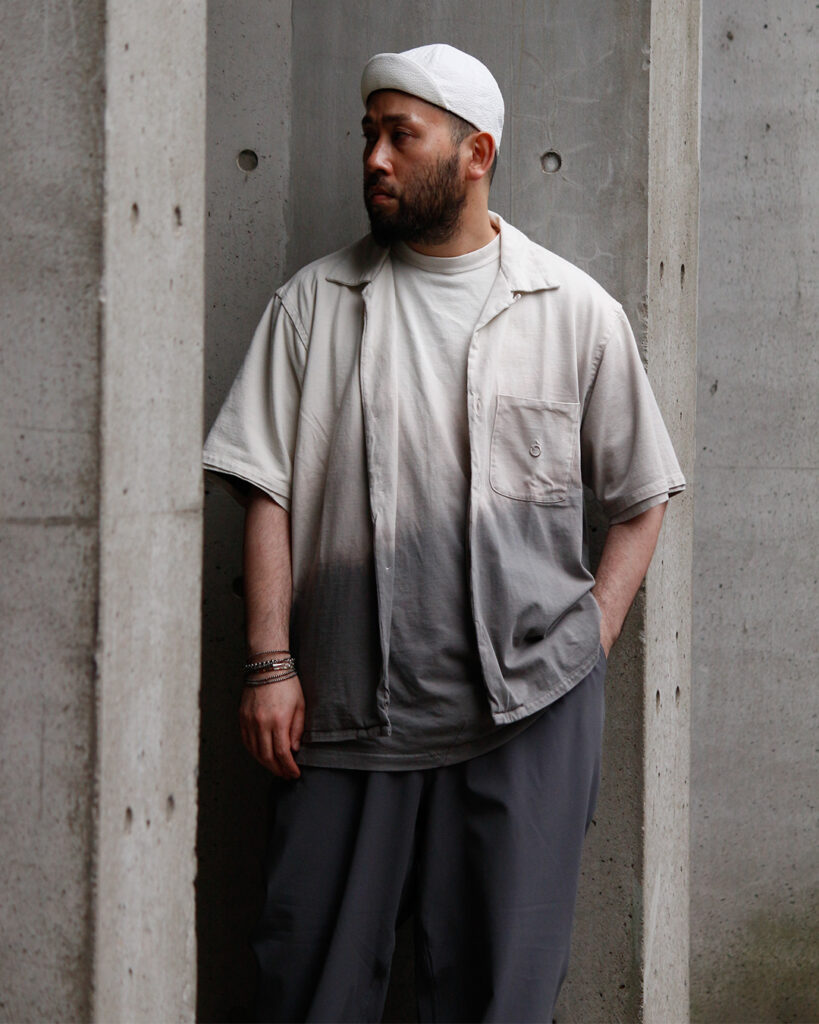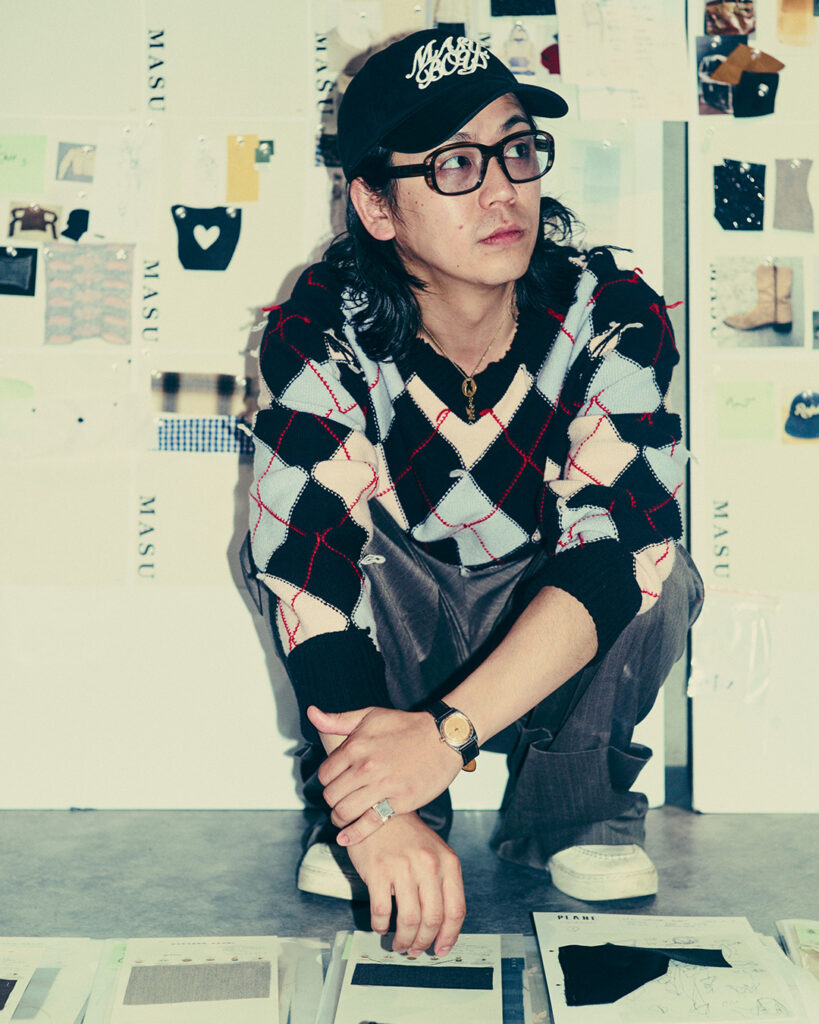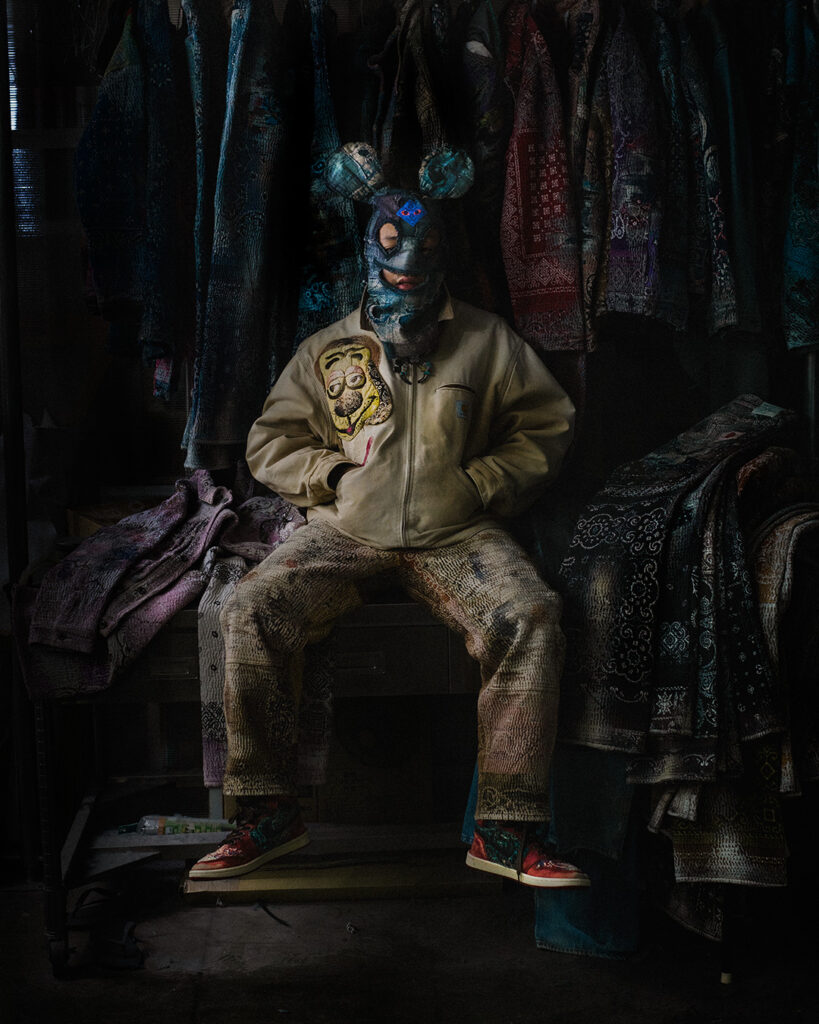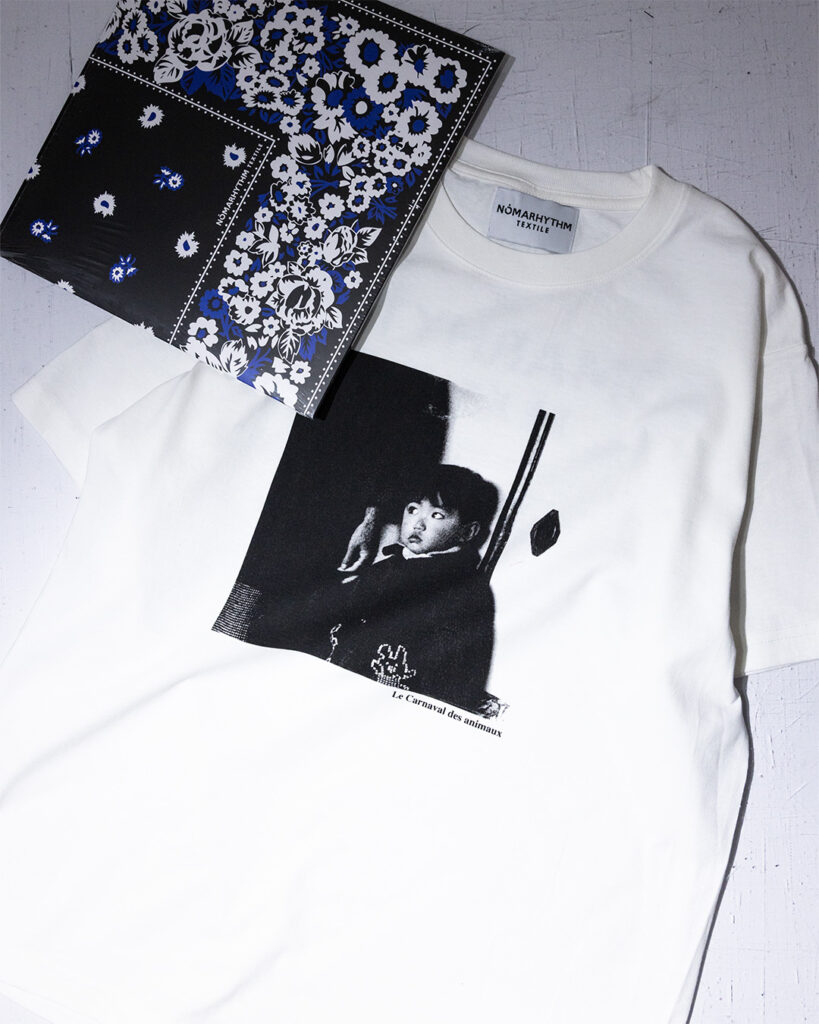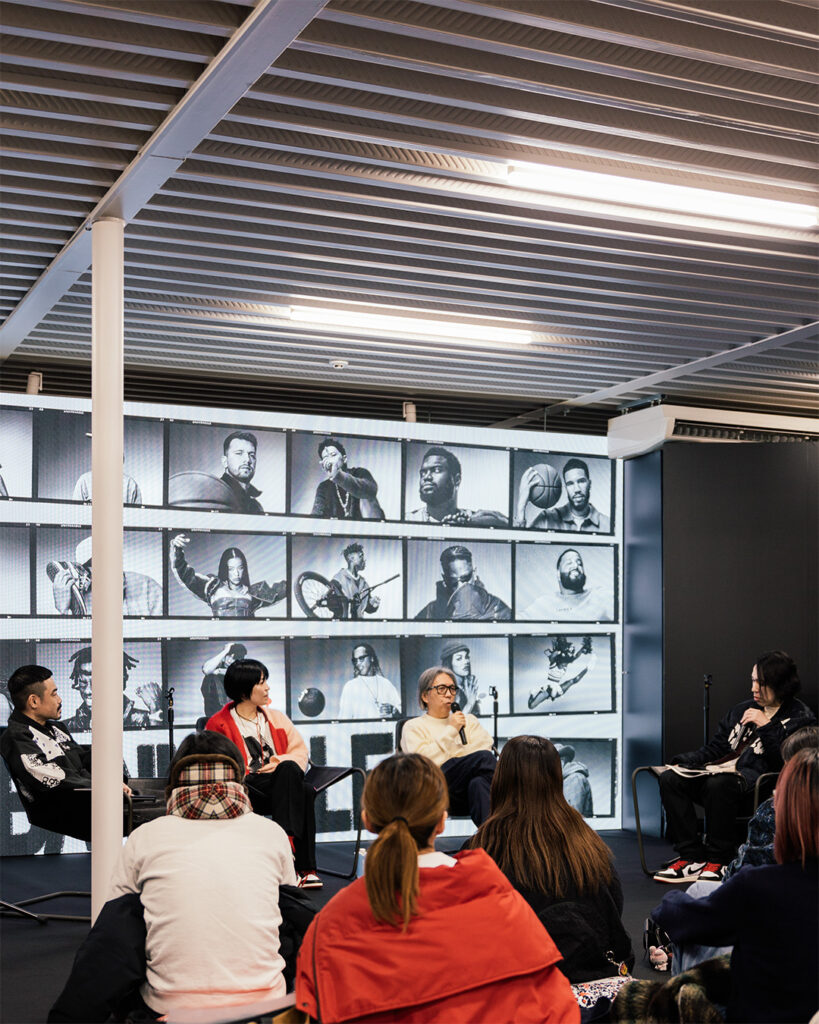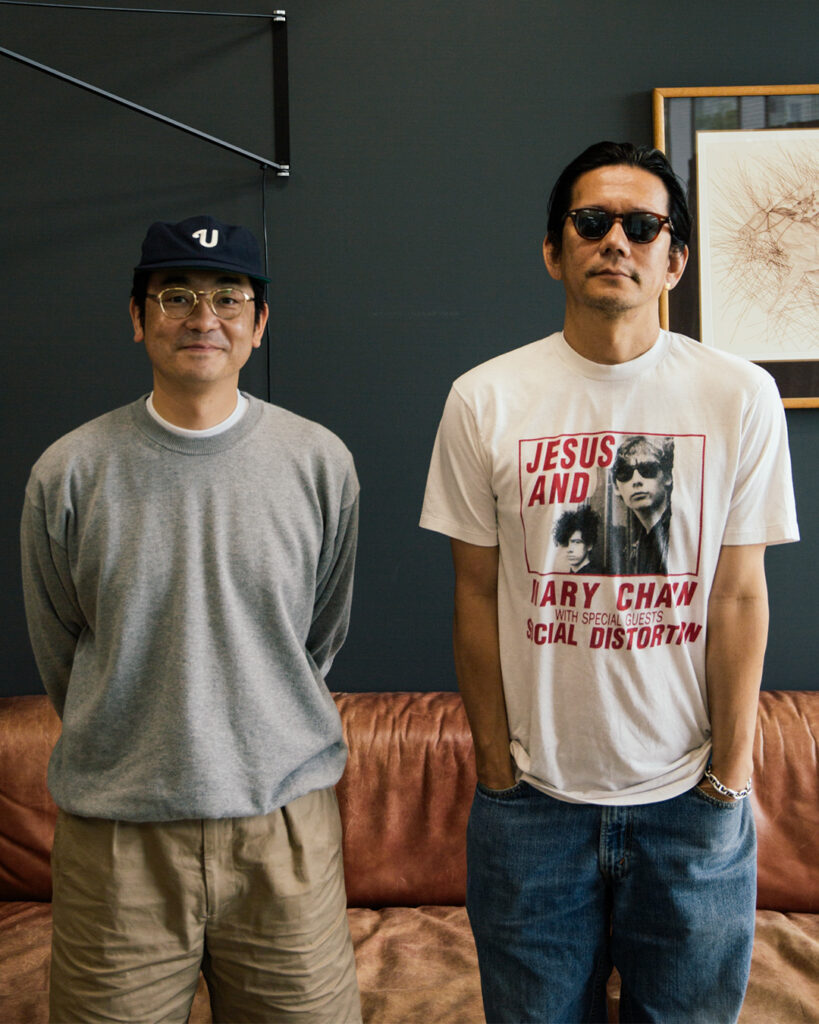Tokyo-based brand Nomarhythm Textile has been steadily gaining recognition in recent years. Launched in 2005 by Masako Noguchi and Takuma Sasaki, the brand made its official debut with the Spring/Summer 2006 collection—and now marks its 20th anniversary.
Long cloaked in a kind of quiet mystery, Nomarhythm Textile built its identity around the less immediately familiar concept of “textile” as a creative core. For many years, it remained something of an insider’s secret. But lately, the brand has begun to attract much broader attention.
So, what exactly have they created over the past two decades, working from the foundation of textile-based expression?
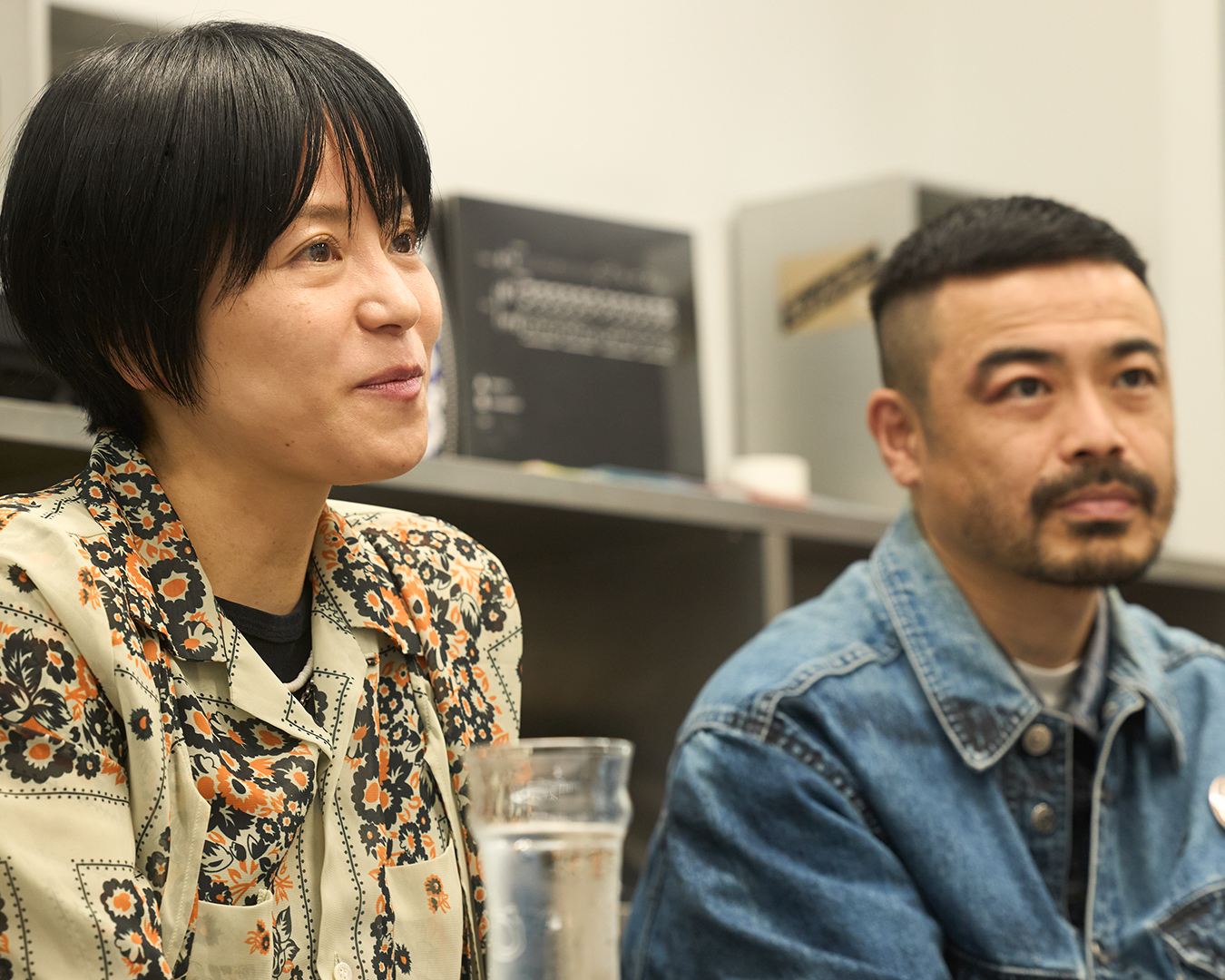
Textile as an Identity
Often affectionately referred to as “Noma,” the brand officially changed its name this year—its 20th anniversary—from Noma t.d. to Nomarhythm Textile. The “t.d.” in the original name stood for “textile design,” but with this new naming, the word “textile” has now been brought clearly and deliberately to the forefront. It’s rare for a Japanese brand to explicitly include the word textile in its name.
In Japan, “textile” still tends to evoke the image of a specialty reserved for fabric suppliers or mills, and as a result, a brand bearing this word in its name may well be mistaken as producing fabric, rather than offering finished clothing. Yet Nomarhythm Textile embraces that perception—fully aware of the misunderstanding it might provoke—as a way of affirming its core identity.
While Masako Noguchi and Takuma Sasaki co-design every detail of Nomarhythm Textile, it was Noguchi who had the deeper, more personal connection to textiles—one that, as she explains, reaches back to early childhood.
“Even before I entered elementary school, I already knew I wanted to do ‘something with fabric.’ My parents and grandmother both influenced my love of clothing from a young age, but I vividly remember this one moment as a child—being wrapped up in a large blanket and feeling this shock of emotion. It felt like I was being protected by the fabric. That simple sensation brought me such joy. From that moment on, I decided, ‘I want to make things like this for a living.’ It’s such a naïvely pure reason, it’s almost embarrassing,” Noguchi recalls.
Originally from Fukuoka, Noguchi moved to Tokyo to study product design at Musashino Art University, where she also became close friends with Takayuki Fujii, now known as the designer behind nonnative.
After completing a junior college program, her passion for textiles remained strong—strong enough to take her abroad. She moved to London to study at Chelsea College of Arts, known for its deep-rooted textile tradition, and later found work in the city. Still driven to explore further possibilities, she next moved to New York, where she began working again as a textile designer. But the experience turned out to be disillusioning.
“The work I was doing in New York didn’t satisfy me creatively,” Noguchi says. “There were times when I was even asked to imitate other brands—which was just too much. I quit, frustrated, and came back to Japan determined to start my own brand.”
It was during that time in New York, however, that she met someone who would become a key connection—Daiki Suzuki, the designer of Engineered Garments, who had long been based in the city.
Ten Years Without Collaborations
Although Noma launched with promising momentum, and while many buyers showed interest in the product itself, its strong sense of individuality also led to it being passed over in some cases.
“People would often say, ‘We’re not sure what other brands to display this next to.’ One thing we were frequently asked was, ‘Which brands are you closely associated with?’ I was already close with people like Fujii-kun from nonnative, and Shimizu-san and Daiki-san from Nepenthes, but I didn’t like the idea of being boxed in by associations. So I’d just say, ‘We’re not particularly close with any brand,’ and purposely be aloof about it,” Sasaki recalls.
In fact, from the very beginning, Noguchi and Sasaki had made a shared decision: for the first ten years of the brand, they would not collaborate with any other label.
Collaborations are undoubtedly an effective way to generate buzz and expand visibility. But they had also seen too many cases of superficial, unnecessary collaborations flooding the market. Despite having genuine connections with designers they trusted, they deliberately chose not to rely on those relationships for exposure.
As a result, Noma’s very first collaboration didn’t happen until 13 years after its founding—with Needles.
For the first six years of the brand, the two operated out of a part of Tokyo far removed from the typical fashion hubs. “During that time, we barely saw anyone,” they admit. But even in that period of isolation, they formed a local connection with Akio Hasegawa—an influential stylist—who began working with them on their lookbook production.
“Even during our lowest points, we were lucky to be surrounded by people who were willing to work with us regardless of budget or scale,” they say. “We were always immersed in new creative work. It was financially tough, but creatively fulfilling.”
Looking back, they both agree:“If we had taken on investors at that stage, they probably would’ve cut us off early. It’s because we were independent that we were able to keep going.”
“Where Have You Been for the Past 10 Years?”
After spending nearly a decade in what could be described as a semi-hermit-like state, Noma relocated its atelier in 2015 to a standalone house they found in Hiroo, Tokyo. The space functioned not only as a working studio but also as a weekend-only shop and a curated art gallery showcasing exhibitions selected by the two founders.
“It was in a borderline area, fashion-wise—about a 15-minute walk from either Hiroo or Ebisu Station,” Sasaki recalls. “But little by little, people started showing up—some who had seen us on Instagram, and others who came specifically for the artists we were exhibiting.”
One unexpected visitor to the Noma space was Hiroshi Fujiwara. He had come by to see the work of a particular artist featured in an ongoing exhibition, but happened to visit on a day the store was closed. That day, Fujiwara posted a short message on Instagram:
“I came by, but it wasn’t open.”
Noguchi and Sasaki, who had been elsewhere that day, noticed a sudden spike in their Instagram followers. Tracing the source, they realized it was due to Fujiwara’s post. They immediately sent him a message apologizing for their absence and let him know the shop was open on weekends. Fujiwara graciously returned on another day.
That first meeting turned into a two-hour conversation, during which Fujiwara asked them,“So when did you start Noma?”
When they replied, “It’s been ten years,” he reacted with surprise: “Where have you been for the past ten years?”—a response that has since become a quintessential Noma anecdote. Fujiwara would go on to collaborate with Noma again when the brand took part in Tokyo Fashion Week, contributing music for a project that paired photography by Rinko Kawauchi with film.
The Hiroo shop would become a place of gathering for creative minds. Exhibitions held there every two months drew in an eclectic mix of visitors—not just local art lovers, but also major players in the Japanese fashion scene. Among them were Hiroshi Fujiwara, Hirofumi Kiyonaga (formerly of Soph.), stylist Michiko Kitamura, and international figures from brands like Nike and Stüssy.
Despite having once told buyers, “We’re not especially close with any brand,” and generally avoiding any kind of tribal affiliation, Noguchi and Sasaki seemed to possess a quiet magnetism—an ability to draw people in and build connections in a natural, unforced way.
By around 2018, a few years after establishing the Hiroo space, Noma had quietly evolved from a brand known only to a select few into a brand known to those in the know.
Textiles Are Made to Be Reborn Again and Again
For about five years, Noma steadily expanded its presence through the weekend store in Hiroo. But eventually, the building—one they loved so much they wished they could acquire—was slated for demolition.
While the store had become a meaningful home base, the brand’s growth had made it increasingly difficult to manage. Inventory was outgrowing the space, and with their ever-busier schedules, Noguchi and Sasaki were beginning to feel the strain of curating regular art exhibitions and events. So, the two made the decision to return to Noma’s original form: a creation-driven brand without a permanent retail space.
Coincidentally, 2020—the year they gave up the storefront—was also when the COVID-19 pandemic brought global disruption. Amid lockdowns and store closures, the two spent time walking through the quiet, empty streets of Tokyo and found themselves reconnecting deeply with textile creation.
One result of that period was the now-iconic Draw Your Garden floral motif, inspired by the look of vintage bandanas. It soon appeared across various Noma items and became a recognizable symbol of the brand.
Noguchi sees one of the great strengths of textiles in their ability to be endlessly reborn. In the world of fashion, collections are constantly replaced, and reusing past patterns is often discouraged. But textiles have a different rhythm. You can create new prints, or you can bring back earlier ones—revived and reinterpreted in response to the current moment.
In fact, for the 2025 Spring/Summer collection, Noma reintroduced a textile from their first season titled “Butterfly’s Revenge”—this time updated in color and scale to suit the new context.
Staying Independent, Surviving on Their Own Terms
Around 2018, as the brand began to gain traction, Noguchi and Sasaki started to notice a shift in how people responded to their work. Buyers and store staff—people they had been interacting with all along—began seeing Noma as something they themselves genuinely wanted to wear. It was the moment when what Noguchi and Sasaki had been proposing started to be understood and received on the same wavelength.
“I think that’s the power of time and consistency,” says Sasaki. “Sure, we’ve grown along the way—we’ve wanted to grow, and in some ways we have—but more than our own evolution, I think what really changed was how others saw us.”
In Tokyo especially, interest in Noma has grown among those most deeply engaged with fashion, and since the brand “lifted” its long-standing no-collaboration rule, it has partnered with an impressive roster of names: Needles, Engineered Garments, Nonnative, Stüssy, Nike, and The North Face Purple Label, to name a few.
The two founders are fully aware that they’re riding a powerful wave right now—and they’re enjoying it, even as they stay grounded.
“When a brand becomes popular, it tends to get consumed—and that happens especially quickly in Tokyo,” Noguchi reflects. “But we knew that from the beginning. Whether we’re riding a wave or not, we’ve always known we need to survive. Things won’t always go well. There will be tough times too. But those moments are actually a chance to ask ourselves again why we’re doing this in the first place. We want to keep making things seriously, and we have our own convictions. So we’ll keep surviving—and enjoy it while we do.”
Today, Nomarhythm Textile is carried by a carefully curated selection of retailers in Japan and overseas. But if you want to experience the full world of the brand, you might consider stopping by the Nomarhythm Textile weekend store in Tokyo’s Omotesando—open only on weekends.
If you’re lucky, you might even run into Noguchi and Sasaki there themselves.
NOMARHYTHM TEXTILE @nomarhythm_textile
NOMARHYTHM TEXTILE WEEKEND STORE @weekendstore_nomarhythmtextile
201, 5-9-17 Jingumae, Shibuya-ku, Tokyo 150-0001




